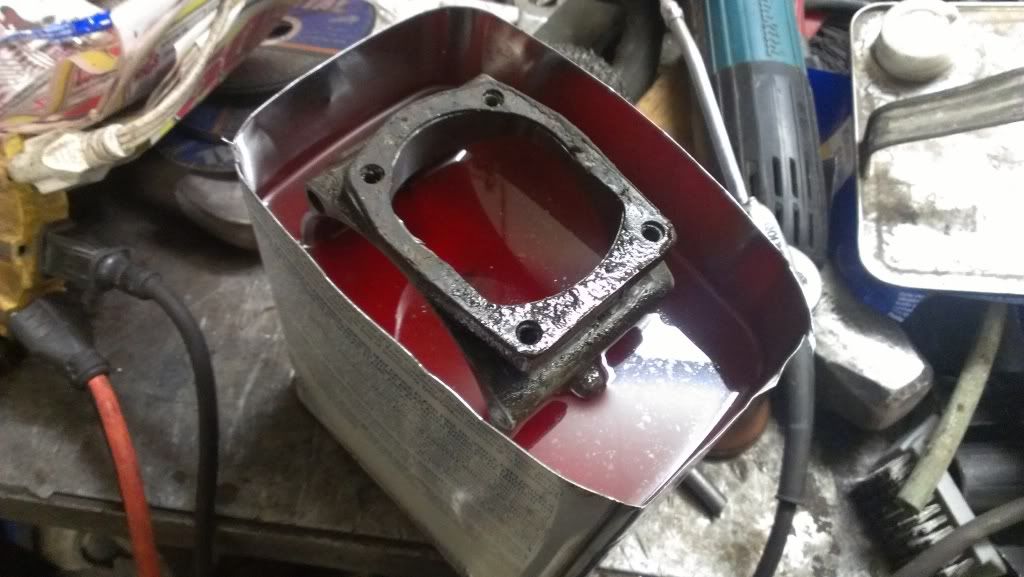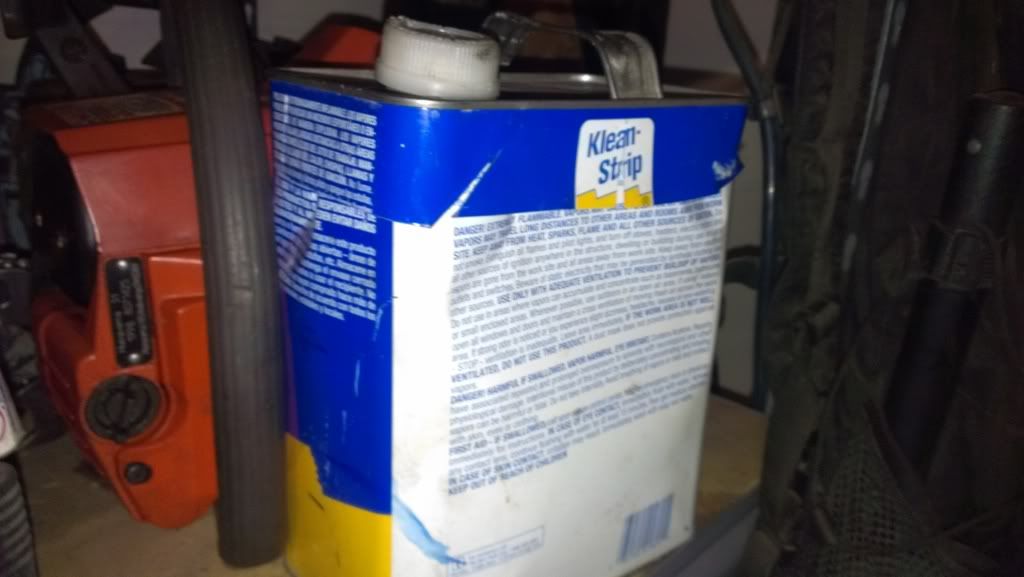WidowMaker1
Addicted to ArboristSite
Diesel & Kerosene

Diesel & Kerosene
Take a compression testing fitting and adapt it to an air compressor fitting .Put it into the plug hole and start with about 10psi and progessively increase. (Setup the means to catch it when it comes out.) To figure out how much pressure is being applied ,use the formula area = pi r squared times times psi pi =3.14159 r equals 1/2 of diameter.
I suspect that the underside of the ring needs the most lubrication. I would use penetrating oil with the piston laying sideways,thru the exhaust port
I have seen it posted here several times-
Machinist's Workshop magazine actually tested penetrants for break out torque on rusted nuts. Significant results! They are below, as forwarded by an ex-student and professional machinist, Bud Baker.
*Don't forget the April 2007 "Machinist's Workshop" magazine comparison
test.*
**
*They arranged a subjective test of all the popular penetrants with
the control being the torque required to remove the nut from a
"scientifically rusted" environment.*
**
*Penetrating oil ..... Average load*
None ..................... 516 pounds
WD-40 .................. 238 pounds
PB Blaster ............. 214 pounds
Liquid Wrench ..... 127 pounds
Kano Kroil ............ 106 pounds
ATF-Acetone mix....53 pounds
*The ATF-Acetone mix was a "home brew" mix of 50% acetone - 50% automatic transmission fluid.*
*Note the "home brew" was better than any commercial product in this one
particular test. Our local machinist group mixed up a batch and we all now
use it with equally good results. Note also that "Liquid Wrench" is about
as good as "Kroil" for about 20% of the price. *
I use PB bc I have several cans of it. I agreed with the ATF bc he was already using it. It probably helps to have acetone mixed with it.
Very interesting numbers! I wonder what their "scientifically rusted" environment for rusting the test bolts?
Thanks for posting this!
Acetone and ATF smells better, and clean up is easier, clean with acetone.
Your asking for opinions, here is mine.
Dump that ATF out of that thing and spray a bunch of Aerokroil penetrating oil down in it and let that soak. That is the best thing for rust and stuck stuff there is.
ATF is oil, it lubicates.....
Something I didn't know about 754's. The plug is on an angle where my Super 75A and Super 660 is straight in the center of the cylinder.
Eliminates the "insert punch and give it a wack" approach.
To the fellows who may not know or maybe missed it: The cylinder and crankcase is all one piece casting. The only way to remove the piston w/rod is to remove the crank and pull the thing out the bottom. The catch here is, you have to be able to turn the darn crank.
The air hose chuck adapted to the spark plug hole may be the only safe option.
Your asking for opinions, here is mine.
Dump that ATF out of that thing and spray a bunch of Aerokroil penetrating oil down in it and let that soak. That is the best thing for rust and stuck stuff there is.
ATF is oil, it lubicates.....
I have seen it posted here several times-
Machinist's Workshop magazine actually tested penetrants for break out torque on rusted nuts. Significant results! They are below, as forwarded by an ex-student and professional machinist, Bud Baker.
*Don't forget the April 2007 "Machinist's Workshop" magazine comparison
test.*
**
*They arranged a subjective test of all the popular penetrants with
the control being the torque required to remove the nut from a
"scientifically rusted" environment.*
**
*Penetrating oil ..... Average load*
None ..................... 516 pounds
WD-40 .................. 238 pounds
PB Blaster ............. 214 pounds
Liquid Wrench ..... 127 pounds
Kano Kroil ............ 106 pounds
ATF-Acetone mix....53 pounds
*The ATF-Acetone mix was a "home brew" mix of 50% acetone - 50% automatic transmission fluid.*
*Note the "home brew" was better than any commercial product in this one
particular test. Our local machinist group mixed up a batch and we all now
use it with equally good results. Note also that "Liquid Wrench" is about
as good as "Kroil" for about 20% of the price. *
I use PB bc I have several cans of it. I agreed with the ATF bc he was already using it. It probably helps to have acetone mixed with it.

 Oh and as far as applying heat,,, I wouldnt heat it more than normal operating temps,,, I have broke a couple free that cranked up and ran once the carby/fuel system stuff was fixed!!!!
Oh and as far as applying heat,,, I wouldnt heat it more than normal operating temps,,, I have broke a couple free that cranked up and ran once the carby/fuel system stuff was fixed!!!!


Enter your email address to join: